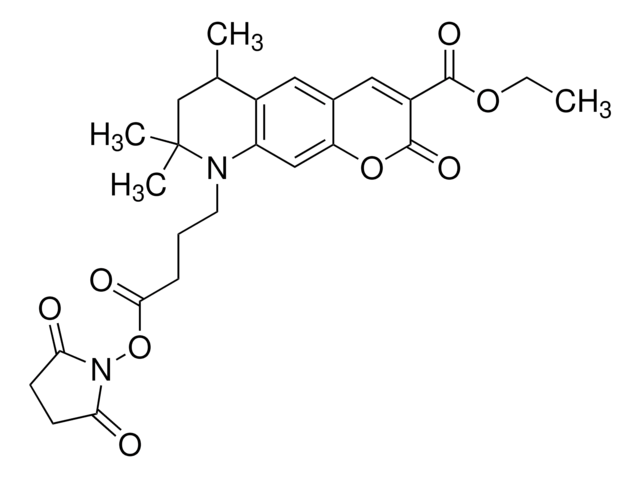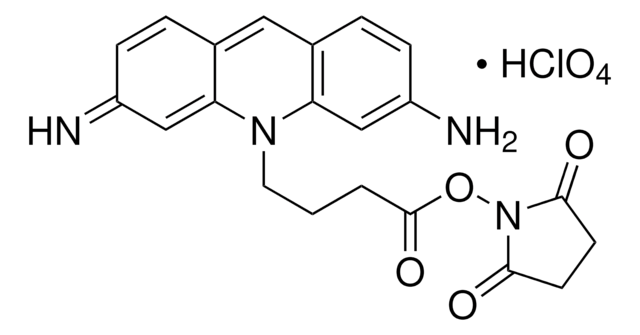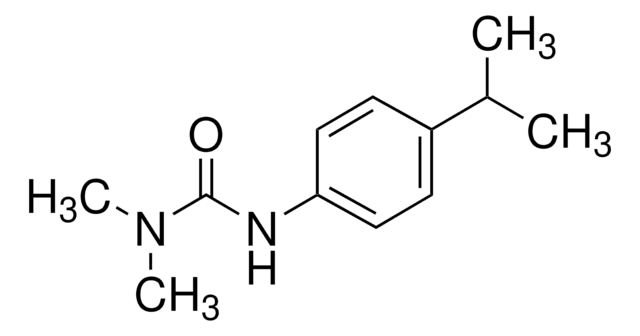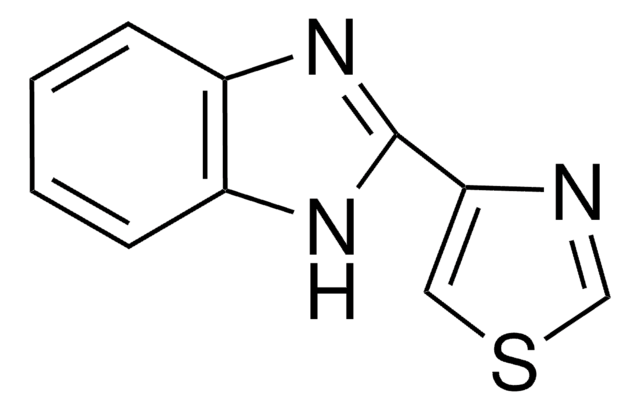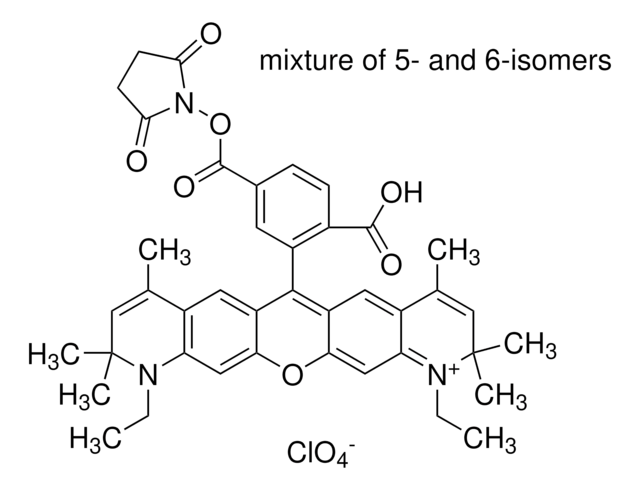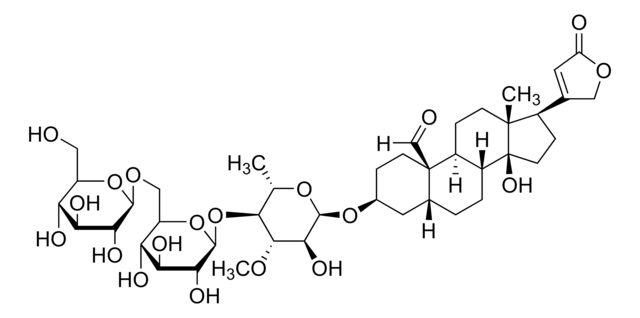About This Item
Recommended Products
product line
BioReagent
Quality Level
Assay
≥90% (HPLC)
form
(Report result)
manufacturer/tradename
ATTO-TEC GmbH
transmittance
254 nm, >90%
425 nm, >90%
fluorescence
λex 440 nm; λem 484 nm
λ
in PBS, pH 7.4
in ethanol (with 0.1% trifluoroacetic acid)
UV absorption
λ: 423-429 nm Amax
suitability
suitable for fluorescence
shipped in
wet ice
storage temp.
−20°C
SMILES string
CCOC(=O)C1=Cc2cc3C(C)CC(C)(C)N(CCCC(O)=O)c3cc2OC1=O
InChI
1S/C22H27NO6/c1-5-28-20(26)16-10-14-9-15-13(2)12-22(3,4)23(8-6-7-19(24)25)17(15)11-18(14)29-21(16)27/h9-11,13H,5-8,12H2,1-4H3,(H,24,25)
InChI key
WNDDWSAHNYBXKY-UHFFFAOYSA-N
Application
Legal Information
Not finding the right product?
Try our Product Selector Tool.
Storage Class Code
11 - Combustible Solids
Flash Point(F)
Not applicable
Flash Point(C)
Not applicable
Certificates of Analysis (COA)
Search for Certificates of Analysis (COA) by entering the products Lot/Batch Number. Lot and Batch Numbers can be found on a product’s label following the words ‘Lot’ or ‘Batch’.
Already Own This Product?
Find documentation for the products that you have recently purchased in the Document Library.
Customers Also Viewed
Our team of scientists has experience in all areas of research including Life Science, Material Science, Chemical Synthesis, Chromatography, Analytical and many others.
Contact Technical Service